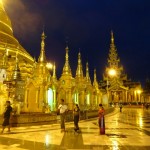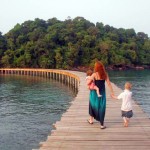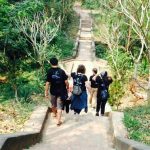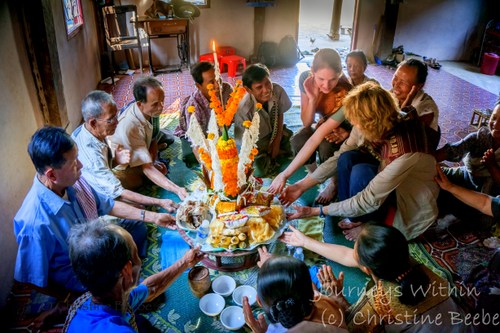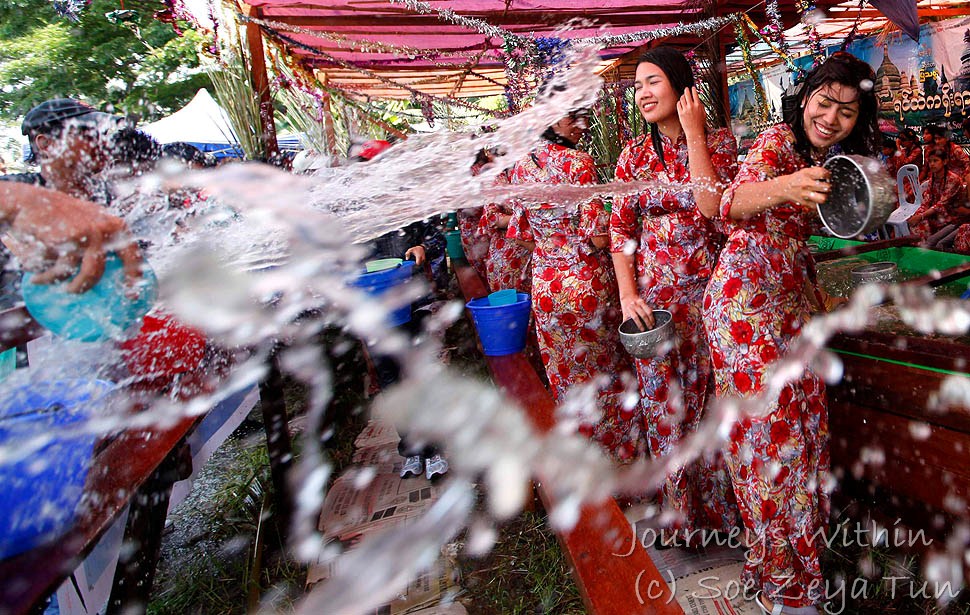During a recent trip with Journeys Within, Christine Beebe and her daughter got to take part in a Baci ceremony while in Laos; it became one of the highlights of their time in Southeast Asia. With New Year celebrations taking place across the region, the upcoming weekend is the perfect time to get a feel for local festivities…
One of the best parts about traveling and experiencing a cultures is the opportunity to take part in celebrations you wouldn’t otherwise be privy to.
For those lucky enough to be in Southeast Asia this time of year, it is definitely time to get out there and join in the party. This upcoming weekend is a big one for the region, with Cambodia, Laos, Thailand and Myanmar all celebrating the solar New Year.
While the celebrations do mean minor inconveniences — business closures, busier roads and a lag in garbage collection — it is also the ultimate opportunity to join in the fun and surely make memories that will last a lifetime. You can also bet that some of the best meals of the year will be served in the upcoming week as families and friends gather around the table this holiday season.
While New Years in Southeast Asia may lack the glitz, glamour and champagne of its December 31 counterpart, it is an opportunity to see normally reserved communities cut loose. Why not join them?
Cambodia – Chol Chnam Thmey (Khmer New Year)
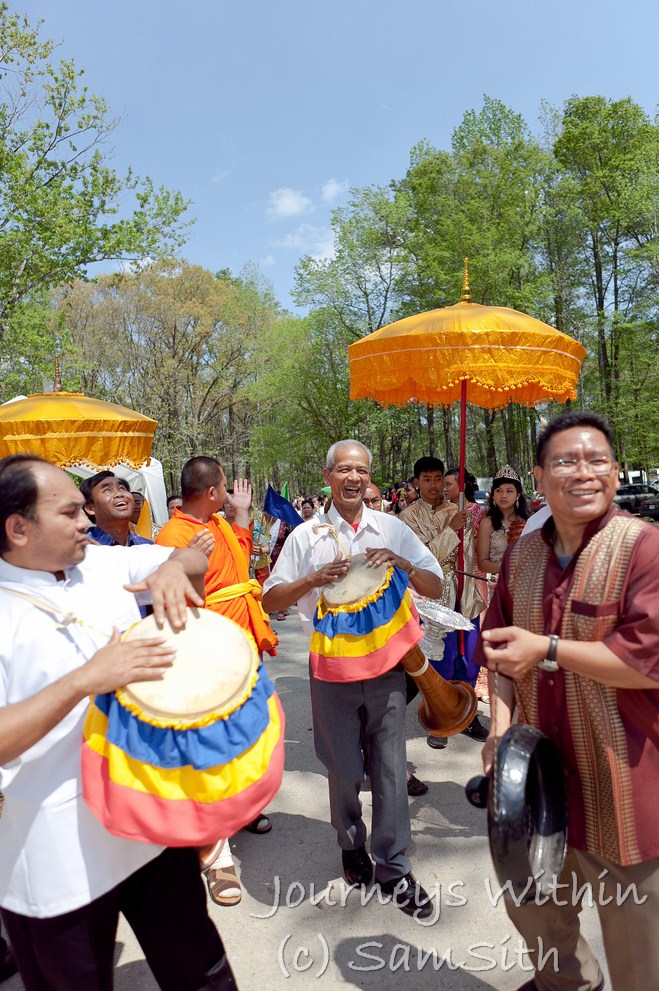
Marking the end of harvest season is Cambodia’s biggest holiday, Khmer New Year. The three-day celebration, running from April 13-15, is a time for Khmer families to reconnect.
Day one, Moha Songkran welcomes new angels for the upcoming year. Houses are cleaned, offerings are made and in traditional households, this day presents a rare opportunity for men and women to mingle freely — keep your eyes peeled for budding romances.
Day two, Vanabot or Wanabot, is the ‘day of giving.’ This is a day to honour your elders and to give to those less fortunate.
Day three, Tanai Lieang Saka, is the new ‘beginning.’ Officially the first day of the new year, this is the day families and friends join together to play games and celebrate the upcoming year.
These three holidays mark a break from the hard work of daily life for Cambodians, with farmers coming in from the fields and urban dwellers returning to their homelands. Siem Reap and Phnom Penh will seem deserted this time a year, though if you are looking for local colour, you could always visit the pagodas where Khmers will congregate to play ancient games and watch traditional performances. Just keep your eyes open for prankster throwing talcum powder!
For those in Phnom Penh, check out Wat Phnom to get in on the festivities, while those lucky enough to be in Siem Reap can head to Angkor, where a temporary village has been erected for the party.
Thailand – Songkran (Thai New Year)
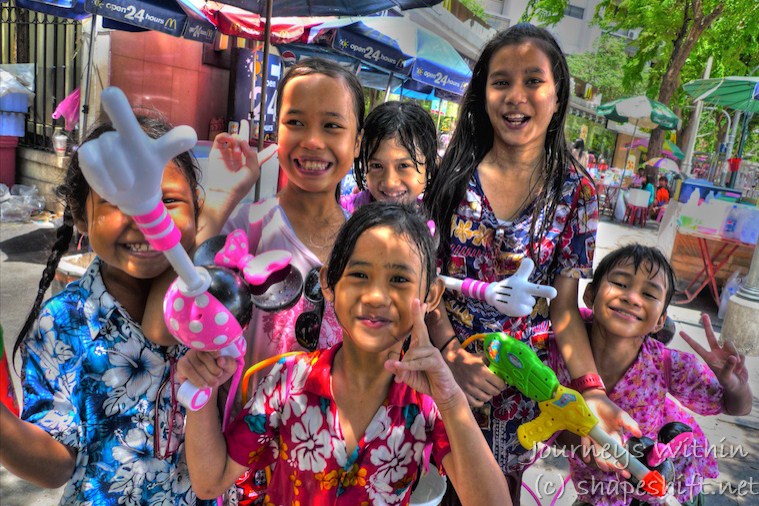
Seal your cell phone in a plastic bag and waterproof your camera, because the Thai version of a New Year celebration is a wet one. Known as the Water Festival, Songkran runs from April 13-16. While it is a time for purification, the holiday is best known for being a wide-spread water fight. Leave you whites and your good clothes at home if you plan to take part is this holiday. Those who are traveling with kids are encouraged to let them join in the fun!
Day one, Wan Sungkharn Long, Thais prepare for the new year by cleaning their homes and heading off to temple to make their offering.
Day two, Wan Nao, is the most delicious day, when foods are prepared to be brought to temples.
Day three, Wan Thaloeng Sok, is New Year’s Day notorious for its street water fights.
Day four, Wan Parg-bee, is to honour the elders. Rose water is often poured over their shoulders as a sign of respect.
Parades, dance performances and traditional ceremonies can be found all around Thailand, though the North is known for their joyous celebrations.
Fitting with the Thai belief that water washes away bad luck, they spend New Year’s Day days dousing one another, as well as passersby, from buckets, water guns and hoses. Be prepare; if you are heading out onto the street you are considered fair game! Luckily the weather in April means you won’t stay wet for long.
Laos — Pi Mai Lao (Laos New Yeah)
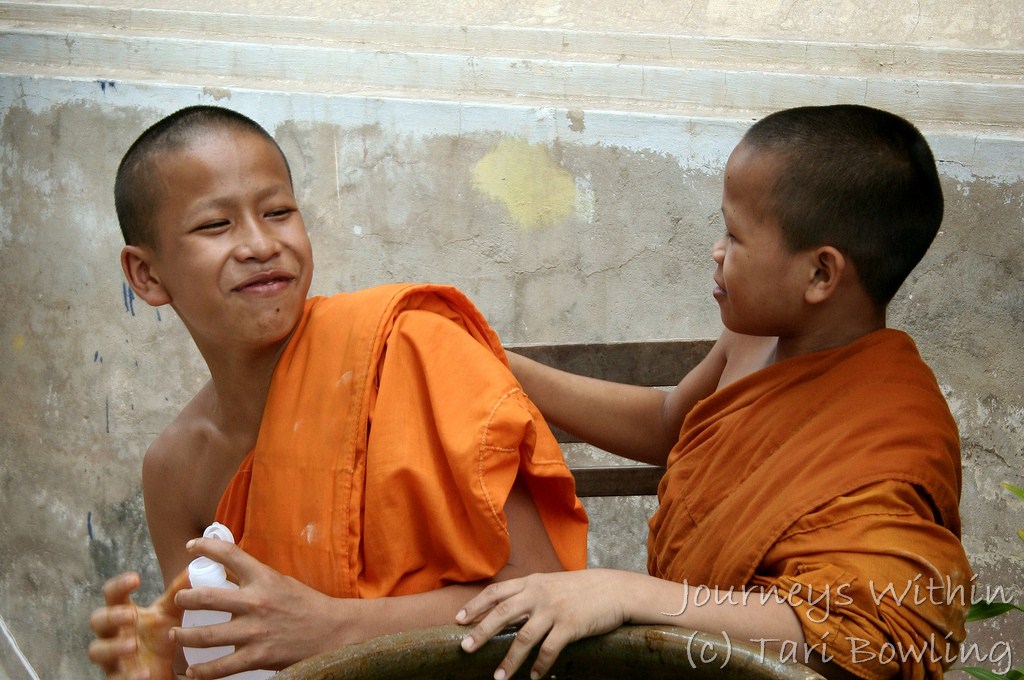
A more gentle version of the Thai New Year, Pi Mai Lao is another wet, albeit less wild, occasion. Like the other New Years taking place across the region, this three-day festival running April 13-15 is about rebirth and purification.
Day one, Sangkhan Luang, is for people to prepare for the New Year by cleaning their houses and seeking blessing by building sand alters decorated with small triangle flags or money.
Day two, Sangkhan Nao, is neither part of the old or new year. Known as the day of rest, feel free to relax because work is forbidden on this day. One of the fun activities that is allowed is the customary throwing of water on friends and passersby. The evenings are celebrated with food, drink and an abundance of traditional dancing.
Day three, Sangkhan Kheun Pi Mai, is the start of the new year and a day to gain merit. The youth rinse their elders with rose and jasmine scented water to show respect and offerings are brought to temples.
If you are looking to get into the spirit of thing, head to the capital city of Vientiane, the former capital Luang Prabang, Pakse or Savannakhet, where the major festivities will be concentrated.
If you aren’t near a major centre you can still take part in the fun. In homes through out the country, families will take part in blessing ceremonies (Suukhwan or Baci) that wish participants good luck and prosperity for the coming year.
Myanmar – Thingyan (Myanmar New Year)
Unlike the rest of the region, Thingyan is based on the Buddhist version of a Hindu myth. In keeping with its neighbors, Burma celebrates the New Year with similar style water festivals across the country. Taking place from April 13-16, Thingyan is said to break down the barrier between the old and young, the rich and poor; a day when cultural and economic barriers are eliminated.
This is also the time of year when people show their gratitude and seek blessing for the new year by giving offerings at temple.
While large scale concerts are planned for the major cities, like Yangon and Mandalay, villages across the country will be taking time together to celebrate, which means large scale water fights wherever you go. Remember to take the splashing in stride and to not appeared bothered less you risk angering the deity Thagyamin.
Tips to enjoying a Southeast Asian New Year:
– Dress accordingly. In Thailand, Laos and Myanmar you are likely to get wet so don’t go out in your Sunday best. By the same token, remember these are traditional holidays, so show respect by keeping shoulders and knees covered.
– Be prepared to give. Like the Christmas season elsewhere, the solar New Year is a time to be generous with those less fortunate.
– Get out there and have fun. If you put yourself out there and act respectfully, most locals will be more than happy to include you in their own celebrations.


